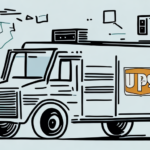Understanding the FedEx Emergency Situation Surcharge
Shipping goods via FedEx is a dynamic process influenced by various factors that can affect delivery costs. One significant factor is the FedEx Emergency Situation Surcharge (ESS), an additional fee that can substantially impact your shipping expenses. This article delves into the FedEx ESS, examining its effects on shipping costs, methods to calculate and avoid the surcharge, real-world examples of affected companies, and strategies for negotiating reductions or waivers.
What is the FedEx Emergency Situation Surcharge?
The FedEx Emergency Situation Surcharge is an extra cost applied to packages shipped through FedEx during emergency situations that lead to a significant increase in transportation expenses. Introduced during the COVID-19 pandemic, the surcharge was intended to cover the additional costs arising from heightened demand and enhanced safety measures to protect both employees and customers.
It's important to note that the ESS is not a permanent fee and can vary based on the severity and duration of the emergency. Situations that may trigger the surcharge include natural disasters, political unrest, and other events that disrupt normal transportation services. For the latest updates on the ESS, refer to FedEx's official Emergency Surcharge Information.
Impact of the Emergency Situation Surcharge on Shipping Costs
The ESS can significantly affect your shipping costs, especially if you frequently ship goods during crises or peak periods. The surcharge varies depending on the specific circumstances but is typically added on top of the standard shipping fee. Unlike other additional fees such as residential delivery or oversize package charges, the ESS is only applicable during temporary emergency situations.
For example, during the COVID-19 pandemic, the ESS was increased to accommodate the surge in shipping demand. This surcharge is not uniform across all FedEx services, so it's crucial to verify with FedEx whether your specific shipping option is subject to the ESS.
When and Why Does FedEx Apply the Emergency Situation Surcharge?
FedEx implements the ESS during periods of crisis, natural disasters, holiday seasons, or unexpected transportation disruptions that lead to increased operational costs. Prior to applying the surcharge, FedEx typically notifies customers through official channels, and the surcharge reflects in your invoice accordingly.
The primary reasons for the ESS include:
- Increased Operational Costs: Emergencies often necessitate additional resources, such as extra trucks, personnel, and enhanced security measures.
- Maintaining Service Quality: By covering the extra costs, FedEx ensures that it can continue to provide reliable and timely delivery services despite the challenges posed by emergencies.
These measures help FedEx sustain its service standards even during adverse conditions, ensuring customer satisfaction and operational efficiency.
Calculating and Managing the Emergency Situation Surcharge
The cost of the ESS varies, typically ranging from $0.30 to $5.00 per package, depending on the nature and severity of the emergency. While this may seem minor for individual shipments, it can accumulate significantly for businesses with high shipping volumes.
To estimate the impact of the ESS on your shipping costs, you can use FedEx's surcharge calculator. This tool provides estimates based on your shipping specifics and current surcharge rates.
It's advisable to factor in the ESS when budgeting for shipping, especially during periods prone to emergencies or high demand. Planning shipments in advance and avoiding peak times can help mitigate the additional costs.
Strategies to Avoid or Reduce the FedEx Emergency Situation Surcharge
There are several approaches to minimize or avoid the ESS:
- Plan Ahead: Schedule shipments during non-peak times or outside known risk periods to reduce the likelihood of incurring the surcharge.
- Use Alternative Carriers: Consider other shipping services like UPS, DHL, or USPS, which may have different surcharge structures.
- Negotiate with FedEx: Businesses with significant shipping volumes can negotiate annual pricing agreements or discounts that include or reduce the ESS.
- Hold at Location Service: Utilizing FedEx's Hold at Location service can help avoid the ESS by preventing package delivery to your doorstep, thus circumventing potential delays and surcharges.
- Proper Packaging: Ensure packages are correctly packaged and labeled to avoid additional fees or surcharges related to improper shipping methods.
Case Studies: Companies Impacted by the ESS
Numerous businesses have been affected by the FedEx ESS, particularly during the COVID-19 pandemic. For instance, small e-commerce businesses experienced increased shipping costs due to a surge in package volume and the accompanying ESS, impacting their profit margins. Similarly, healthcare institutions shipping medical supplies faced heightened expenses, challenging their financial stability amidst the crisis.
Large multinational corporations relying on international shipping also encountered significant ESS-related costs, prompting some to explore alternative shipping options or renegotiate contracts with FedEx to manage the financial strain.
Alternatives to FedEx for Emergency Shipments
If the FedEx ESS presents a financial burden, alternative carriers such as UPS, DHL, or USPS may offer different surcharge rates that could be more favorable depending on your shipping needs. Additionally, courier services specializing in urgent and time-sensitive deliveries can provide flexible options, though they may come at a higher cost.
Local shipping and packaging stores may also offer competitive rates or have partnerships with carriers that provide discounts for emergency shipments. Exploring these alternatives can help businesses find cost-effective solutions during emergencies.
Conclusion: Evaluating the FedEx Emergency Situation Surcharge
The FedEx Emergency Situation Surcharge is a critical consideration for businesses managing shipping logistics, especially during unpredictable events. While it adds an extra expense, understanding the factors that trigger the ESS and implementing strategies to mitigate its impact can help businesses maintain their bottom line. Negotiating rates, planning shipments strategically, and exploring alternative carriers are effective ways to manage the financial implications of the ESS.
Furthermore, since other carriers may impose similar surcharges, it's essential to research and compare different shipping options to ensure you receive the best value for your shipping needs. Staying informed and proactive in your shipping strategies will enable your business to navigate emergency situations more effectively while controlling costs.




















